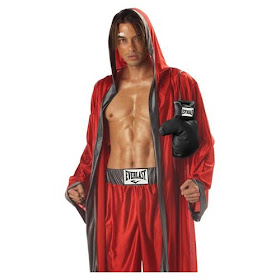Which characters are the kings and queens of licensing? Seriously, take a minute to think about it and make some guesses.
Your intuition might lead you to Mickey Mouse, or to Winnie the Pooh, or to superheros like Spiderman or IronMan, or maybe to Pixar characters like Nemo and Lightning McQueen. What about Star Wars? If your intuition leads you to these characters, you’d be right. (Incidentally, every single one of these properties (Disney traditional, Pixar stable,Winnie the Pooh, Marvel, and Lucas Films) are all under the Disney domain. And, according to work done by the Licensing Letter, the top three properties for licensing in Canada and the USA come from the Disney Princesses, Star Wars, and Pooh. Each of these properties is worth well over a billion a year in revenue and taken together, they account for almost a third of all character licensed revenues in Canada and the USA.
But there is one other property that needs special attention. Move over Princesses, there is a Kitty that is world-wide licensing royalty.


Hello Kitty is a fictional kitty character comic created by Sanrio Inc. The famous kitty made her first appearance in Japan on a vinyl coin purse in 1974. Three years later, she was introduced in the United States. Sanrio initially was targeting pre-adolescent females, but Hello Kitty caught on with teenagers and adult consumers as well. It is now one of the "powerhouse" characters in North America (see below) and with its strength in populous Asia, it vies for world-wide cartoon popularity supremacy.
Given the comic's look and feel, it seems obvious that Hello Kitty character would end up as dolls, stickers, greeting cards, clothes, accessories, school supplies and purses. But what is surprising is that Hello Kitty appears licensed on toasters, televisions, home appliances, massagers, hard rockin Stratocaster guitars, wines, high end gemstones,and computer equipment. It is even less obvious (and more surprising) that Hello Kitty has been licensed out to rare collectibles and an airline. Yes, that’s right, an airline!
EVA Airways, a Taiwanese airline company, has brought brand licensing to a whole different level. Originally launched in 2005, the totally Hello-Kitty themed fleet has recently grown to 5.(EVA added 2 more to its fleet in the last few months). Just how Hello-Kitty themed is the Hello Kitty airline service? It's 100% Hello Kitty integration. Every consumer touch-point has been Kittied-up: the plane, the luggage machines, the ticket counters, the in-flight design, the boarding passes, the flight attendant uniforms, and the food. These images speak for themselves.
 |
| Even airport in Taipei was even redesigned in order to fit the theme. |
 |
| The luggage handlers drive Hello Kitty equipment |
 |
| Hello Kitty, pillows and head rests |
 |
| In-flight service Kitty-style! |
According the EVA, the Hello Kitty themed air service has been a huge success since launched. According to the Evergreen Group, the parent company of EVA Airways, all the Hello Kitty jets have occupied over 85 to 90 percent per flight, well above industry averages. Try the experience online yourself: http://evakitty.evaair.com/en/pages/experience/lineplane.aspx
__________________________________________________________________________
 TOP 10 LICENSED ENTERTAINMENT/CHARACTER PROPERTIESU.S. AND CANADA, 2010
TOP 10 LICENSED ENTERTAINMENT/CHARACTER PROPERTIESU.S. AND CANADA, 20101. Disney Princess -- Disney -- $1,725 million
2. Star Wars & The Clone Wars -- LucasFilm -- $1,415 million
3. Pooh -- Disney -- $1,100 million
4. Toy Story -- Disney/Pixar -- $915 million
 5. Cars -- Disney/Pixar -- $810 million
5. Cars -- Disney/Pixar -- $810 million6. Hello Kitty -- Sanrio -- $750 million
7. Mickey & Friends -- Disney -- $725 million
8. Peanuts -- Peanuts Worldwide/Iconix -- $660 million
9. Sesame Street -- Sesame Workshop -- $525 million
10. WWE -- WWE -- $520 million






















